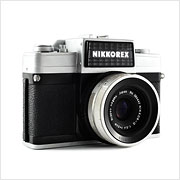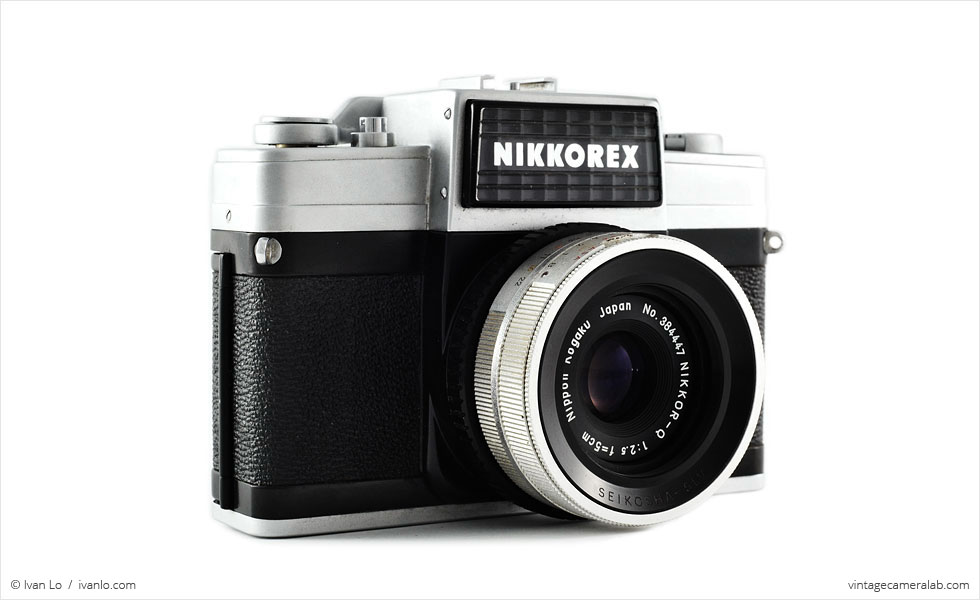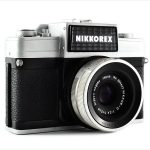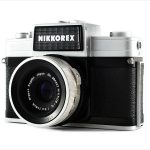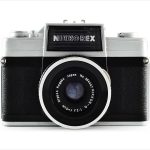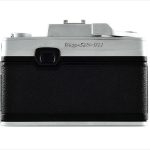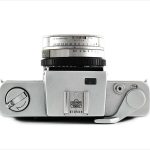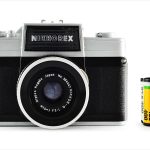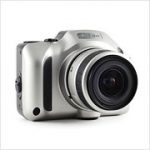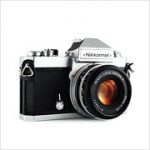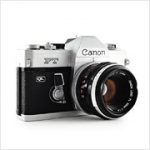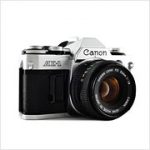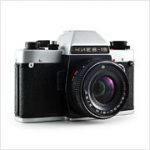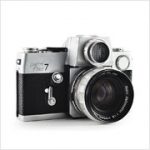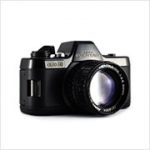Nikon Nikkorex 35 II Specifications
| Manufacturer: | Nippon Kogaku Tokyo K.K. |
| Origin: | Japan |
| Made in: | Japan |
| Introduced: | 1962 |
| Type: | Single Lens Reflex |
| Format: | 135 Film |
| Dimensions: | 14.5 x 10 x 8 |
Nikon Nikkorex 35 II Overview
The Nikon Nikkorex 35 II is the second of a new series of affordable, fixed-lens SLRs introduced in the 1960s and marketed as a budget alternative to Nippon Kogaku’s flagship camera: the legendary Nikon F. While the F was quickly gaining popularity for SLRs among photojournalists and other professional photographers, the Nikkorex line was designed to offer TTL (through-the-lens) capabilities to the general public at a much lower cost.
The original Nikkorex 35 and the Nikkorex 35 II are very similar. Both are equipped with the same fixed 50mm f/2.5 Nikkor-Q lens, both have selenium meters mounted above the lens—as opposed to the F’s more accurate TTL metering system—and both have the same basic body and control layout. The primary difference between the two is the shutter assembly. While the original 35 had a shutter made by Citizen (yes, the wristwatch company), the II has a much more robust and reliable one made by Seikosha, the predecessor of Seiko (yes, another wristwatch company). Other, more subtle differences include the II’s body having rounded edges for better ergonomics and a big “NIKKOREX” badge on the meter.
There are two very interesting features of the Nikkorex. One of them is that the shutter speed and film speed selector—which usually takes the form of a dial on the top plates of most SLRs—can instead be found on the lens barrel. The other notable feature is that there are two metering windows, one is visible when looking through the viewfinder and the other is located on the top plate by the cold shoe. While these two attributes are considered unusual for SLRs, I think they’re great. Having the shutter speed dial on the lens barrel lets you make adjustments comfortably without taking your eye off the viewfinder but when you do eventually remove the camera from your face, you can still estimate exposure by glancing at the second metering window. I have great appreciation for both of these things because they also show up on my beloved Nikkormat FT3 and, at least to me, they are the features that make me reach for my FT3 more than any other film SLR.
Find your very own Nikon Nikkorex 35 II on eBay.
McKeown, James M. and Joan C. McKeown’s Price Guide to Antique and Classic Cameras, 2001-2002. (Grantsburg, WI, USA: Centennial Photo Service, 2001), p 495.
